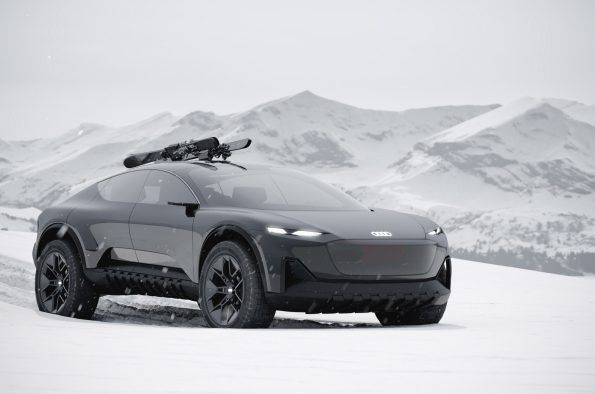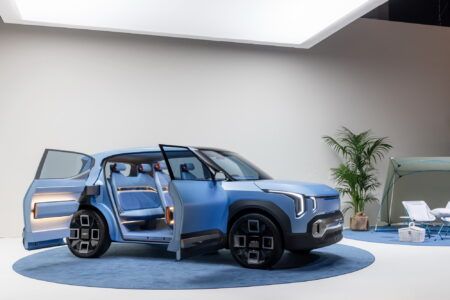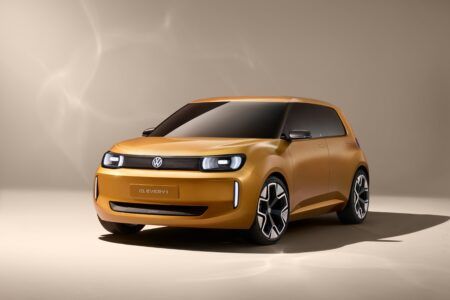Audi have unveiled the final of its four “sphere” concepts, the futuristic electric pick-up Activesphere. The coupe-like hatchback has an elongated roofline, in which the entire rear section folds horizontally, then opens to a cargo bed that’s large enough for e-bikes or other water and winter sports gear.
With an electric drive and quick-charging technology from Audi’s PPE modular system, the Audi Activesphere joins the sphere family of concept vehicles. With no local emissions, a range of over 372 miles, and extremely fast charging times thanks to 800-volt technology, it combines the sustainability, dynamics, and long-distance capability of state-of-the-art electric vehicles. There’s also a dedicated off-road mode.
The sphere concepts, unveiled over the past couple of years, include the Skysphere sports car, Grandsphere flagship, and Urbansphere city-themed aerovan. The four each represent one of the rings in Audi’s logo and present a vision of the brand’s future electric vehicle design that also incorporates automated driving.
“The Activesphere is unique,” said Gael Buzyn, the manager of the Audi Design Studio in Malibu, California, where the concept was designed. “It is a new type of crossover that cleverly combines the elegance of an Audi Sportback, the practicality of a SUV, and true off-road capabilities.”
The most futuristic aspect of the Activesphere is its nod towards autonomous driving and mixed reality interface moments. For those, the driver and passengers will wear high-tech headsets displaying digital content in the occupants’ fields of vision in real-time. The headsets will also provide a view of the real environment and the route, while simultaneously displaying 3D content and interactive elements – this “Audi Dimension” is individually configurable for drivers and passengers.
According to Audi, the “sphere” in the concept name alludes to the interior. Kilowatts, mph, and lateral acceleration are no longer at the top of the design specifications for Audi’s new generation of cars. Instead, the starting point is the interior, the occupants’ living and experience sphere whilst travelling. Their needs and desires shape the space, the architecture, and the functions. With that reassessment, the design process itself changes. At the beginning of all discussions, the focus is directed toward the interior and its design. Only once that has been decided upon are the package, proportions, and lines of the exterior design considered.





